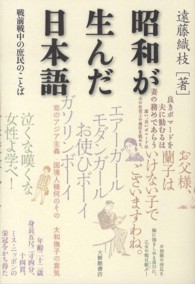Full Description
This book is a guide for any clinician who has a pain patient, including biomedical/allopathic and complementary practitioners. The reader can use each chapter independently when considering a referral to the specific complementary approach, or as an educational tool to learn about the various massage, movement and mindfulness (MMM) approaches and provide comprehensive, evidence-informed support for patients seeking pain relief.
Contents
Section One: Pain Pathology Chapter 1: Pain Theory: Chapter 2: Pain Anatomy: Chapter 3: Introduction to Integrative Healthcare and Multi-disciplinary Approaches to Treating Pain: Section Two: Body-based Approaches to Pain - Soft Tissue Focus Chapter 4: Massage Therapy: General: Chapter 5: Lymphatic Drainage: Chapter 6: Scar Massage: Section Three: Body-based Approaches to Pain - Structural Focus Chapter 7: Myofascial Techniques: Rolfing, Hellerwork, Soma, Aston: Chapter 8: Osteopathy: Strain/Counterstrain, Muscle Energy, CranioSacral: Chapter 9: Functional Taping: Section Four: Body-Based Approaches to Pain - Energy and Asian Modalities Chapter 10: Energy Work: Polarity, Reiki, Therapeutic Touch: Chapter 11: Asian Modalities - acupuncture, acupressure, Tui Na, Shiatsu: Section Four: Body-base Approaches to Pain - Movement Focus Chapter 12: Feldenkrais, Alexander Technique: Chapter 13: Trager: Chapter 14: Stretching and strengthening (Pilates, AIS, Functional stretching): Section Five: Mind-body Approaches to Pain Chapter 15: Yoga, T'ai Chi, Qi Gong: Chapter 16: Meditation, Imagery, Progressive Relaxation: Chapter 17: Body Awareness, Biofeedback: Chapter 18: Summary: Various care pathways based on these approaches to assist healthcare practitioners in deciding how to effectively co-manage pain, including guidance on when and where to refer:







